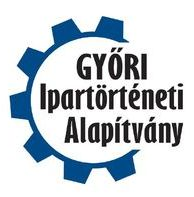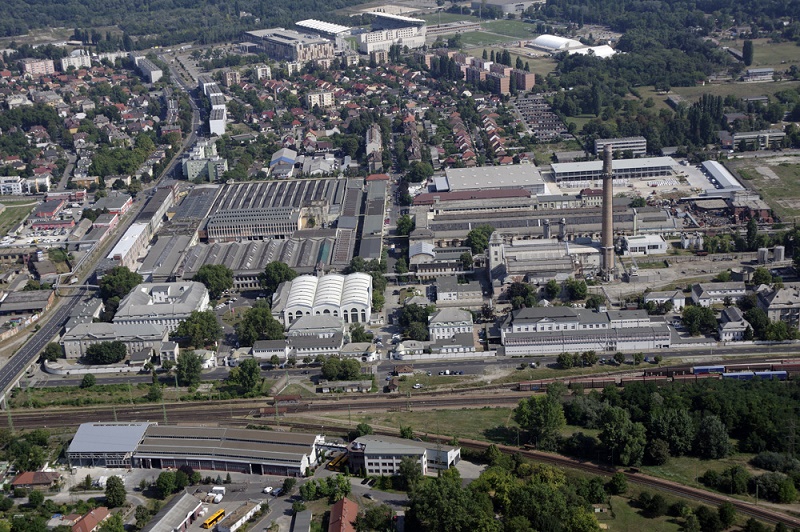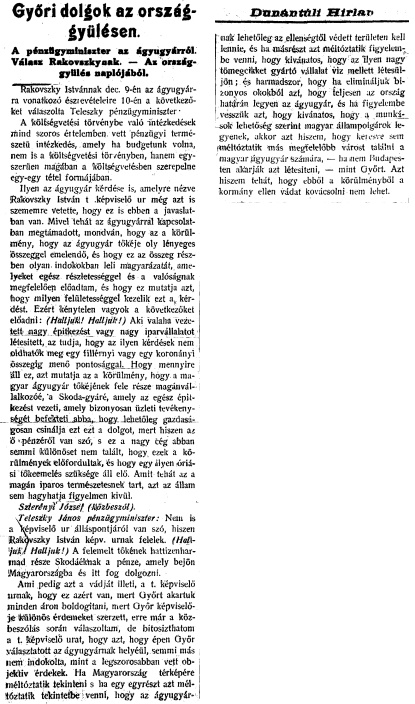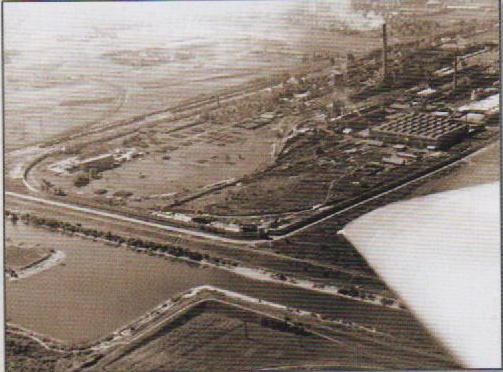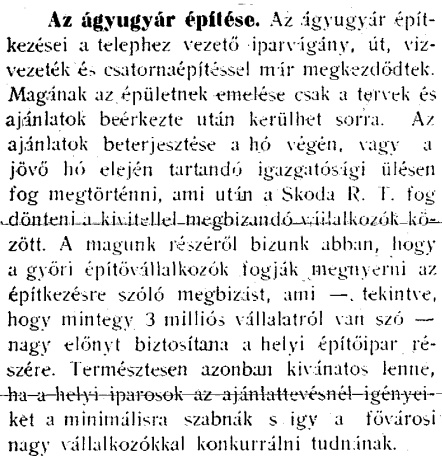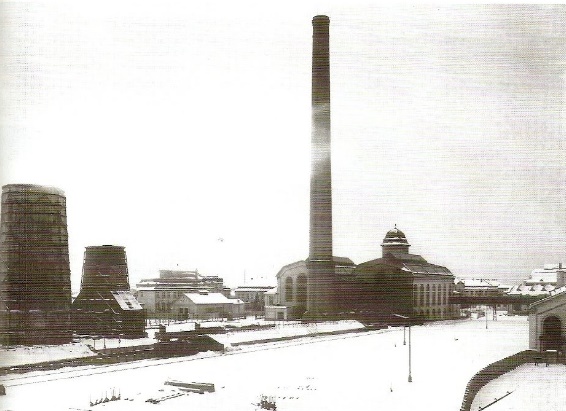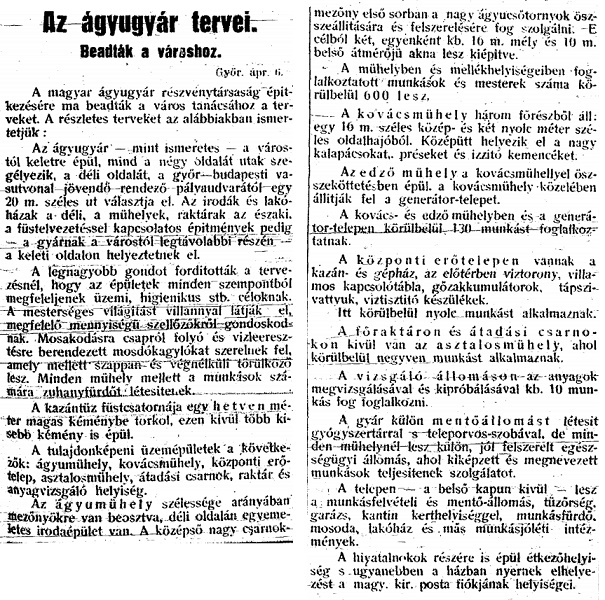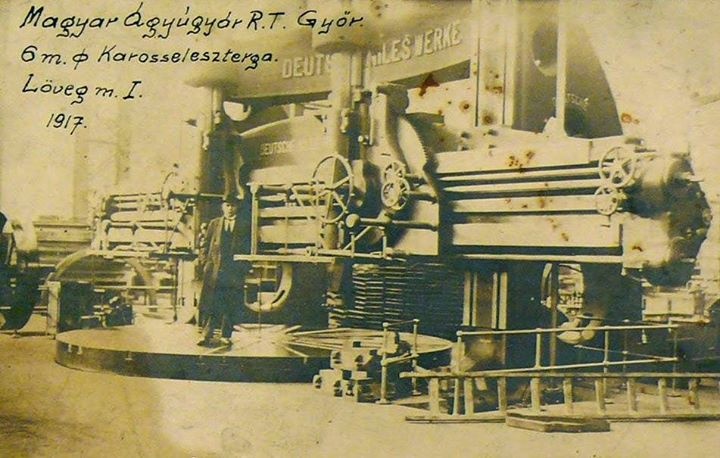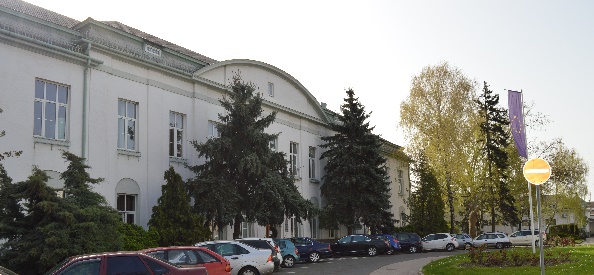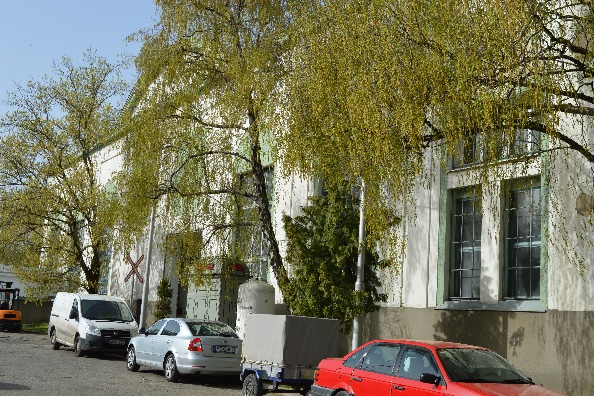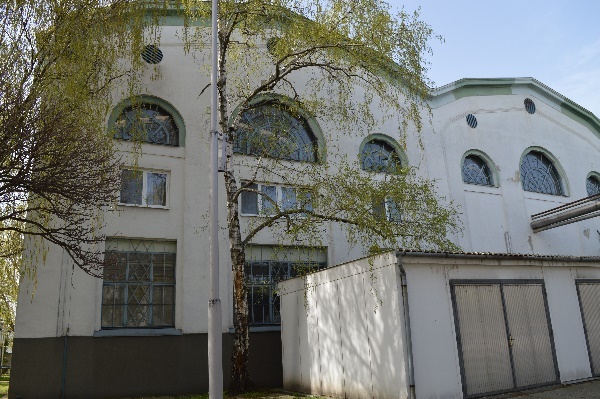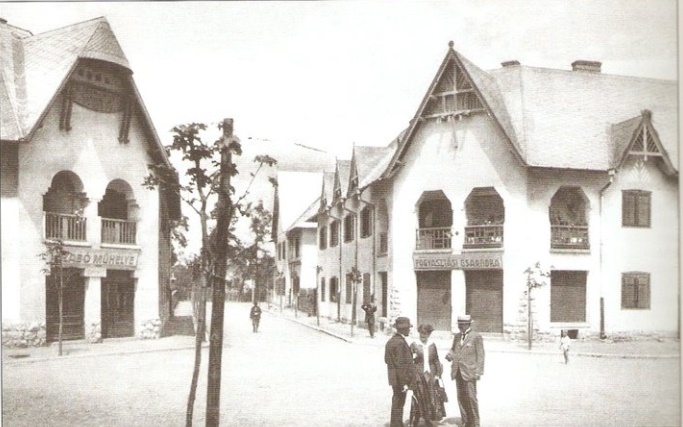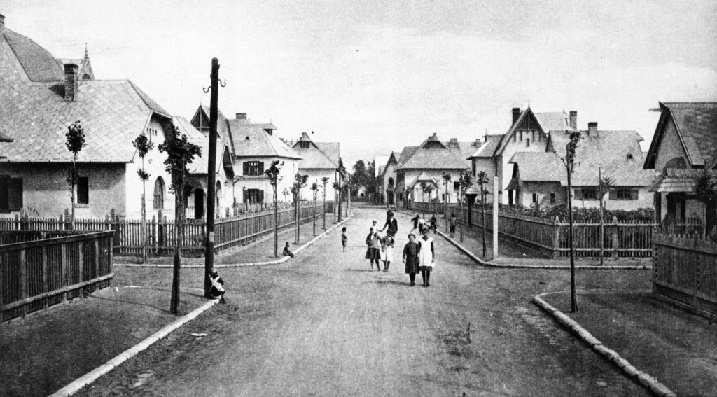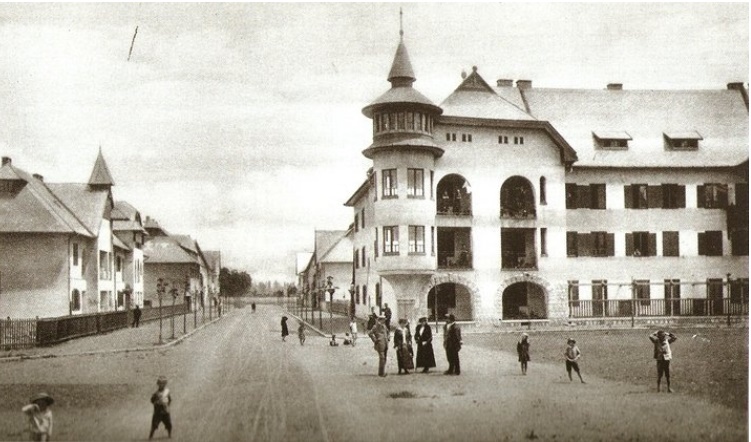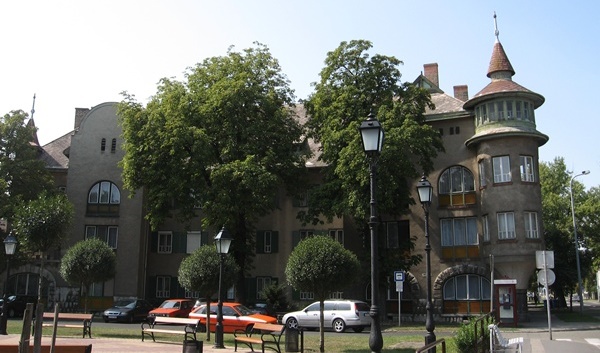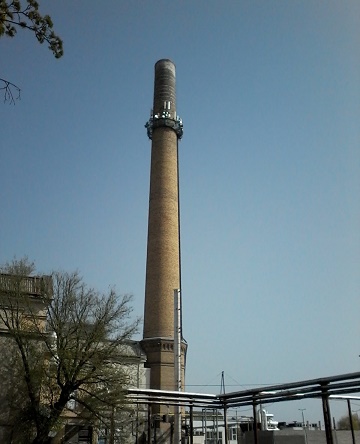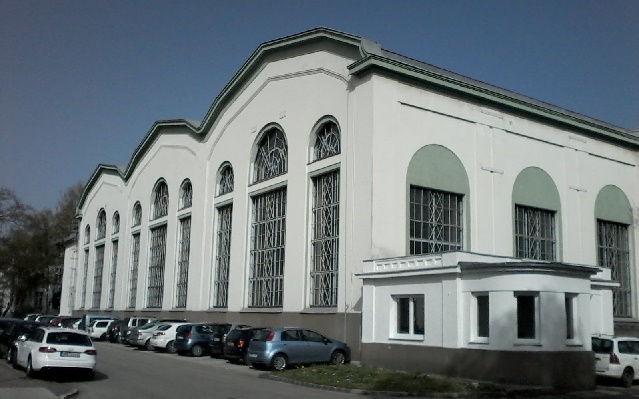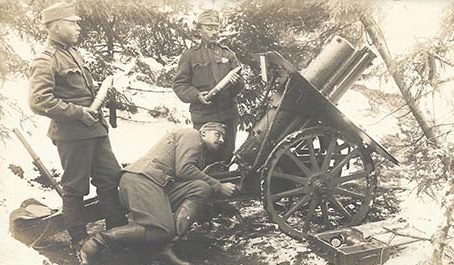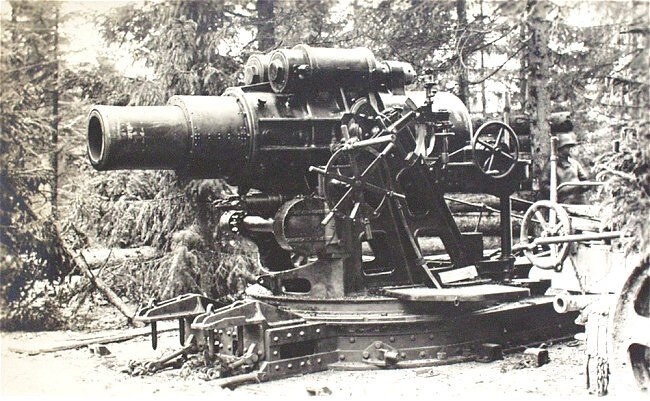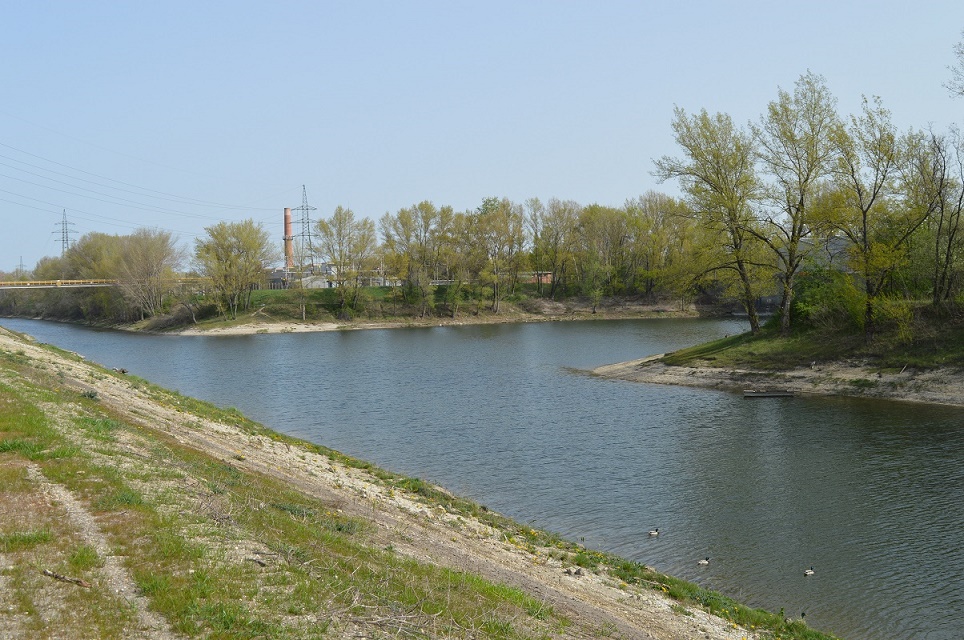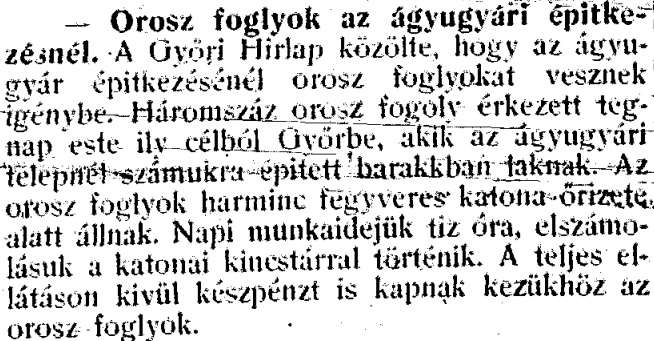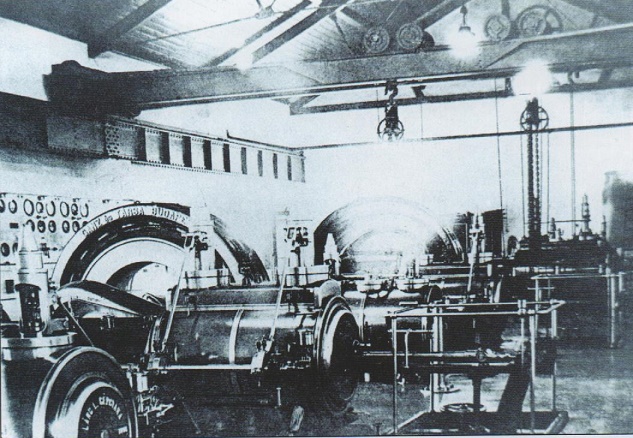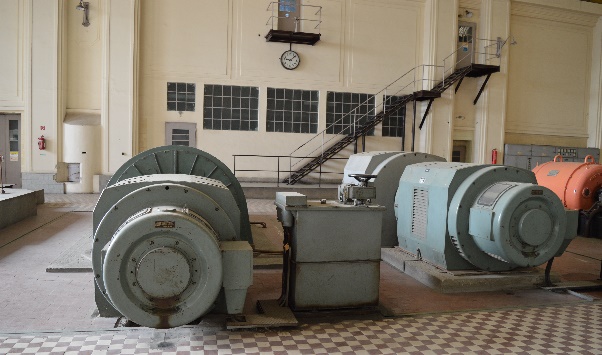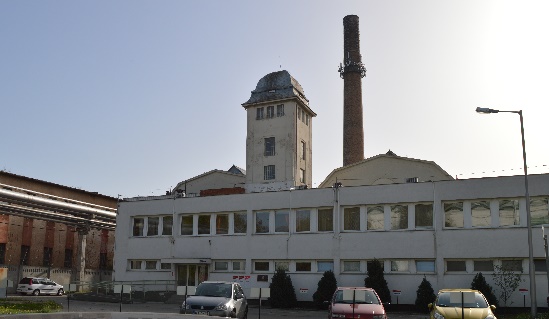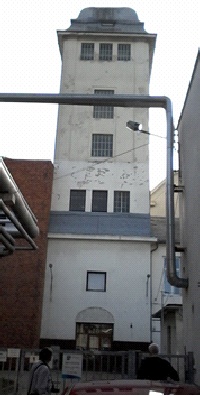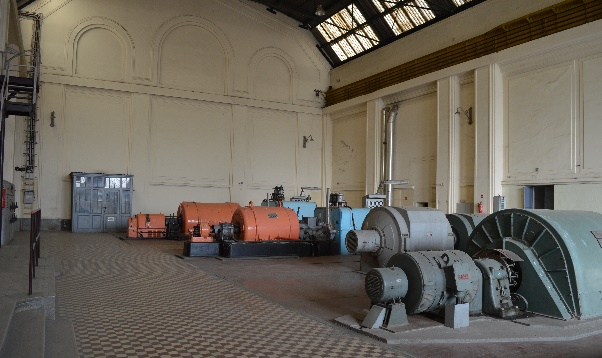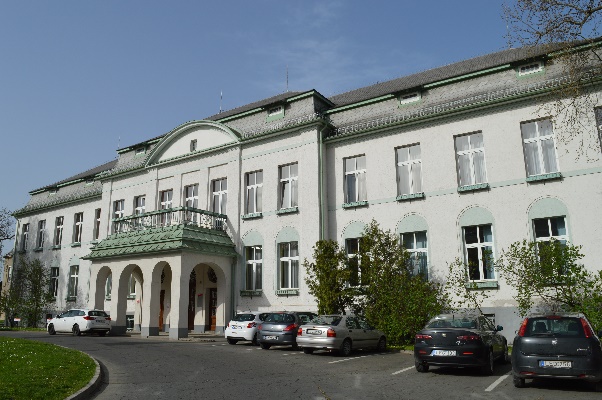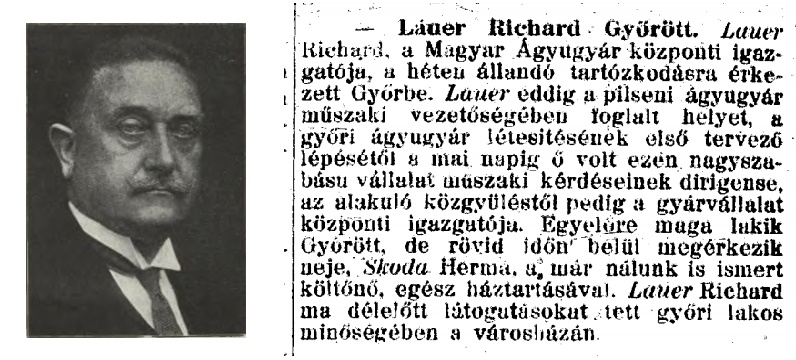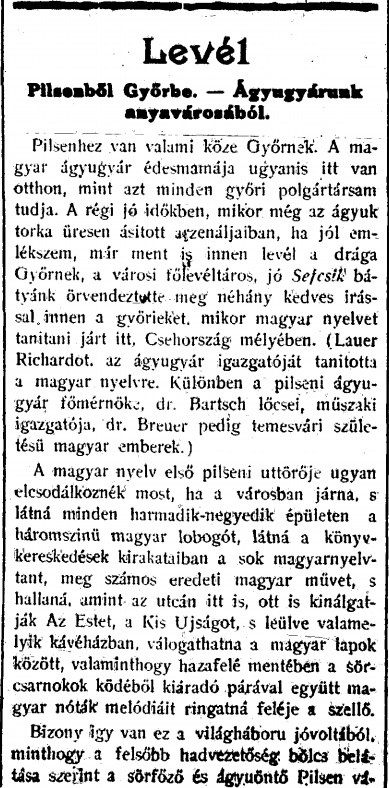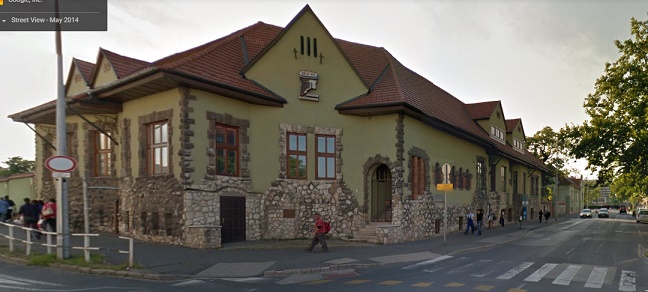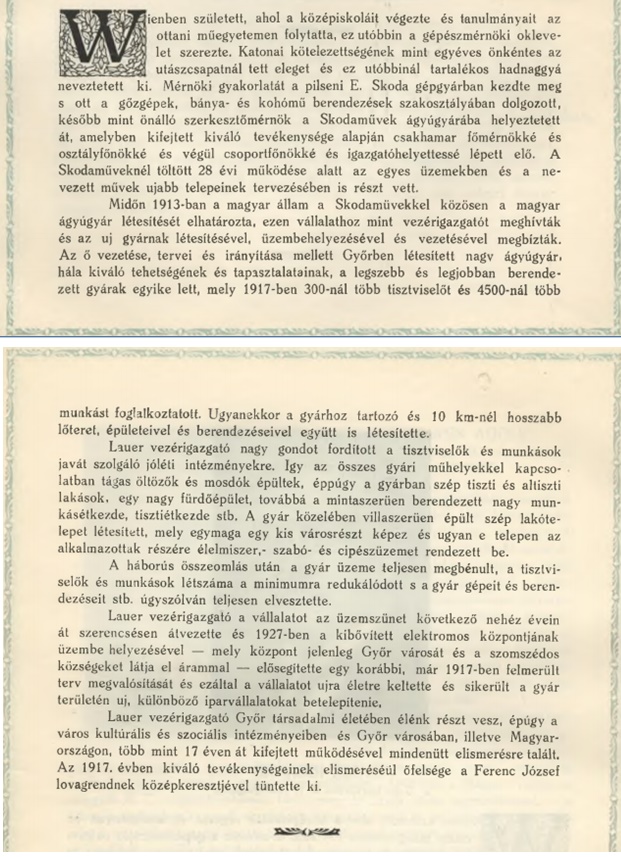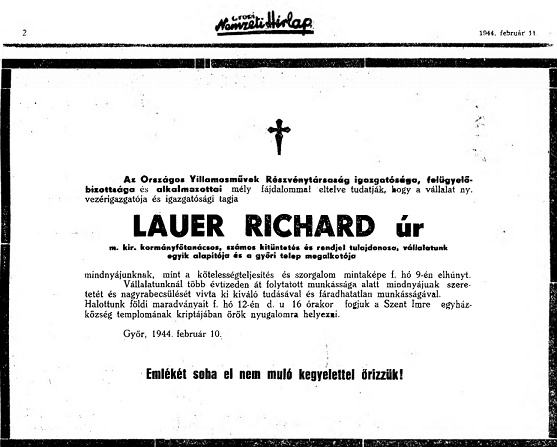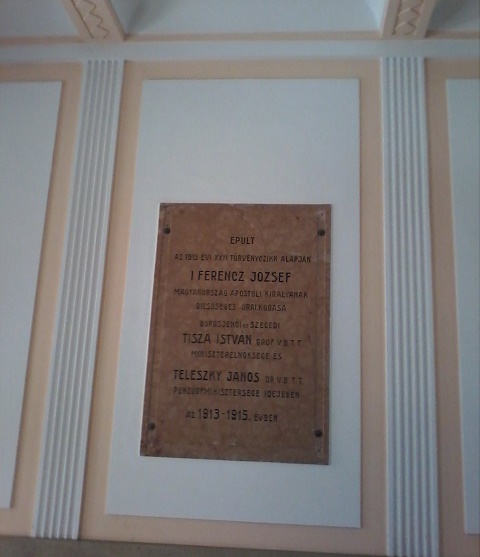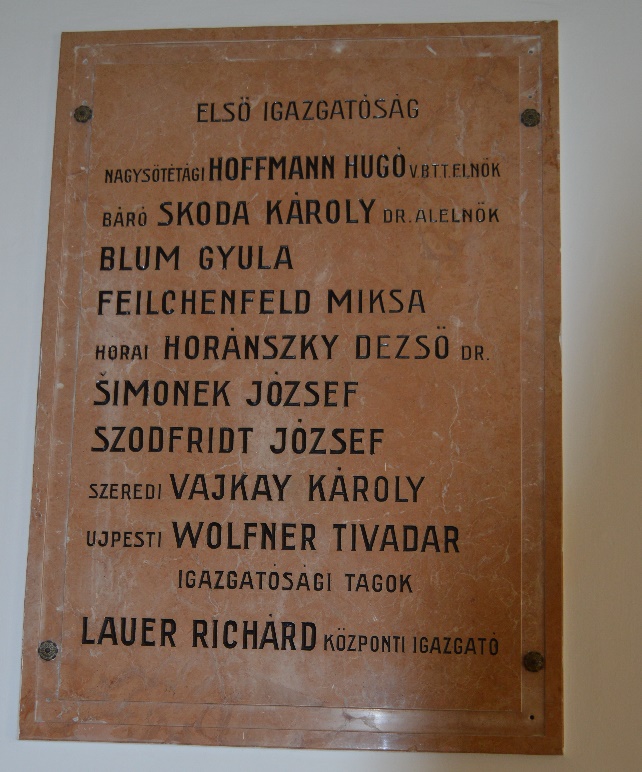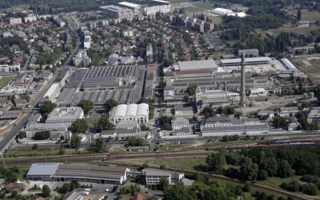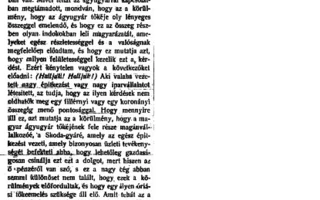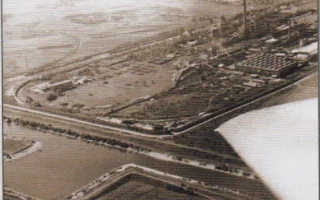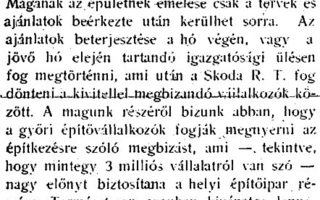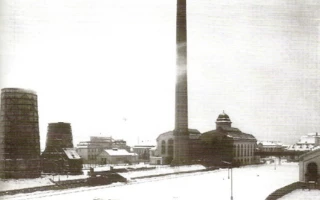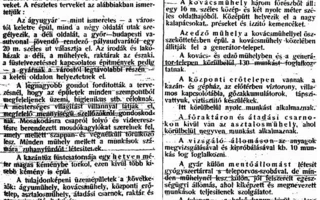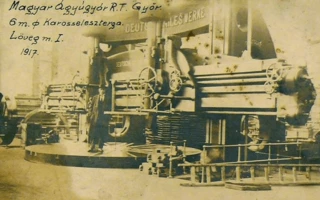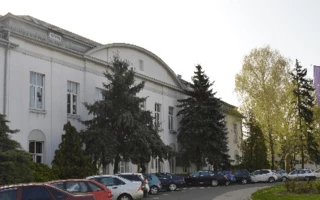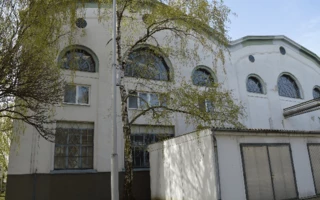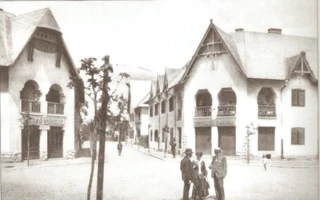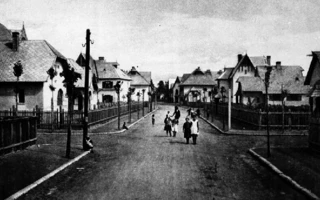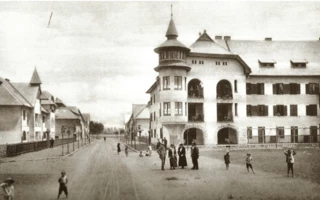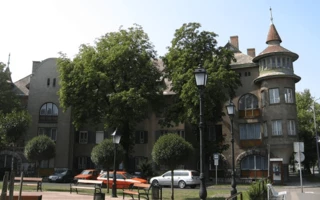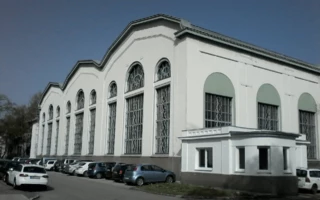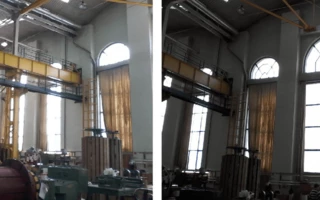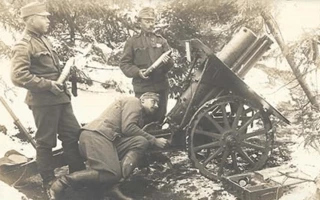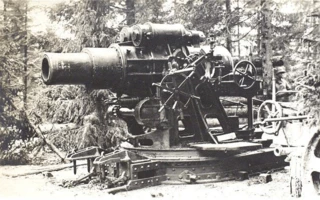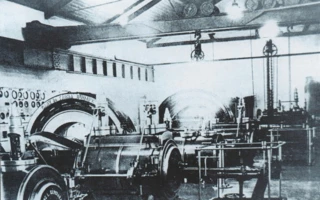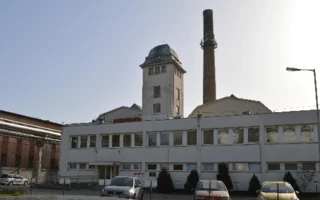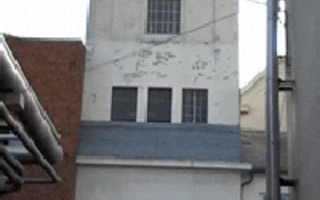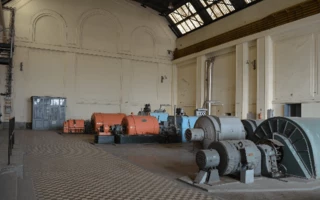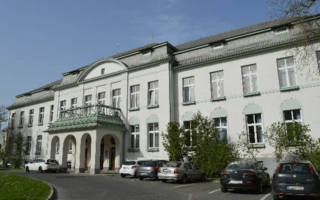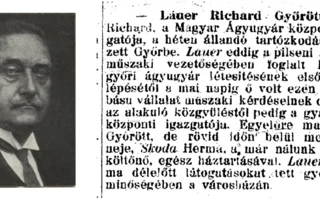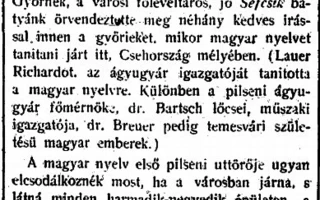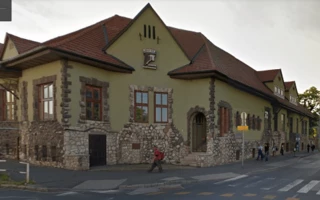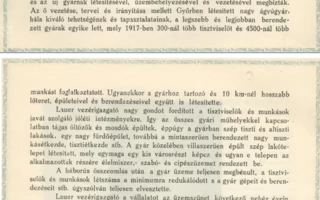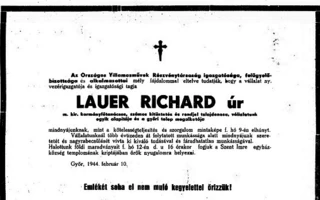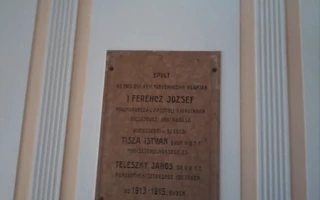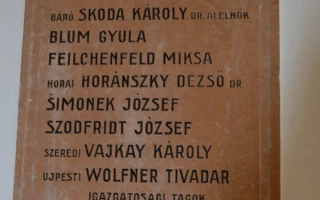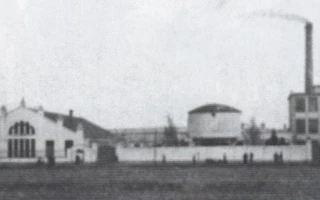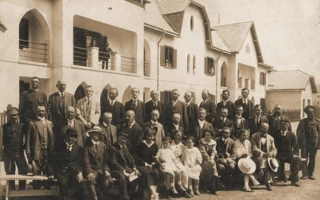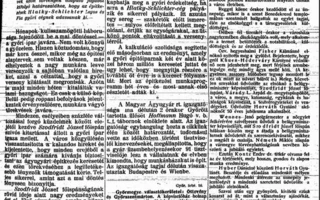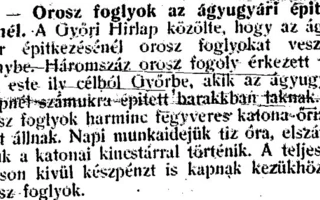Contact details
Foundation for Industrial History of Győr
Szent István út 10/a
Phone:
+3696520274
Fax: +3696520291
E-mail:
ipartortenet@ipartortenet.hu
Map
Hungarian Cannon Factory Ltd.
| ADRESS OF THE MEMORIAL SITE, ROUTE PLANNING |
Győr, Kandó Kálmán Street 13. (Area bounded by Ipar Street, Puskás Tivadar Street, Iparcsatorna and Kandó Kálmán Street)
| WHAT CAN WE SEE AT THE MEMORIAL SITE? |
The former Győr cannon factory operated in the area bounded by Ipar út – Kandó utca – Ipar-csatorna – Puskás Tivadar út . After the factory closed down, several businesses began operating on the plot within the characteristic brick wall fence. Among these, ÉDÁSZ, and now E.ON Észak-dunántúli Áramhálózati Zrt. “inherited” and preserved the most beautiful buildings of the cannon factory.
The memorial plaque is located on the brick fence at 13 Kandó Street, next to the main entrance of E.ON – next to the memorial plaque of Kálmán Kandó.
There is a reception service on site, but if you check in, you can take a walk around the yard .
Stopping at the roundabout behind the entrance, you can see the former office building on the left, and the main building of the gunnery on the right. Turning right, we first pass the three-aisled building of the gunnery, and then the power plant complex and chimney also appear on the left.
The power plant can be visited by pre-registered groups 1–2 times a year, with the cooperation of the Industrial History Foundation.
From here (from the side facing the power plant chimney) it is worth turning back.
On the left side of the road are the residential buildings of the artillery battery, a canteen and old office buildings. Behind the artillery battery, it is worth turning right and following the connecting road to the concrete fence dividing the site in two. Along the way, we can also admire the beautiful patina of the metal cladding of an old transformer station. At the end of the road, if you look to the right, you can see the former water tower of the power plant. Turning left, we return to the roundabout after the entrance.
Street View:
-
Aerial photo from our days:
Cannon factory site
Aerial photo: Zsolt Andorka, 2018
| BRIEF OVERVIEW |
|
One of the largest and most modern cannon factories in Central Europe was founded by the Hungarian state in 1913, in cooperation with the Skoda Works in Pilsen and the Krupp Works in Essen. Construction began in Győr in January 1914 and was completed in 1916. Until the end of World War I, 7.5–30.5 cm caliber guns, cannon components, and mortars were manufactured here. The factory was completely dismantled by the occupying Romanian army in 1919, leaving only the bare walls. The Ágyúgyár, which changed its name to Győri Ipartelepek Rt, bought out the Skoda shares in 1921 and became 100% owned by the Hungarian state. The empty halls were mainly occupied by textile companies. One half of the site housed the Ágyúgyár's electric power plant, while the other half became the Győr branch of MÁVAG in 1942 , where artillery ammunition cases and other military materials were manufactured. After World War II, the Győr branch of MÁVAG was first merged with the Hungarian Wagon and Machine Works , and then in 1951 it was again made independent under the name Győri Szerszámgépgyár for the production of military products. In addition to civilian products, anti-aircraft machine gun carriages, and from the early 1960s, amphibious combat vehicles and armored personnel carriers were manufactured here. The Szerszámgépgyár was merged into the wagon factory on 1 January 1964, which operated as part of it from then until the change of regime. |
| DETAILED COMPANY HISTORY |
In World War I, which began as a blitzkrieg but quickly turned into a standing war, traditional stabbing weapons and repeating rifles quickly lost their significance. Combat equipment was needed that could destroy soldiers seeking cover in trenches from long distances. Therefore, cannons of various calibers and types, mortars, and then, at the end of the war, mortars gained great importance.
In 1911, the Hungarian government wanted to establish a gun factory in Diósgyőr with the help and cooperation of the English company Vickers and Maxim. The Austrian military and political elite did not want to hear about such a strategically important weapons factory being based on the technology of a country belonging to a hostile military bloc and instead of the English weapons factory, they recommended the Skoda Works in Pilsen as a partner, where almost all types and calibers of weapons and ammunition had been manufactured since 1899.
The joint Ministry of War would have liked to see Bratislava, which was much closer to Austria, as the location for the Hungarian Artillery Factory, but in the end, at the suggestion of Skoda Works, they decided to locate the Hungarian Artillery Factory in Győr . The Minister of Finance stated the reasons for choosing the Győr installation site in the December 12, 1915 issue of the Dunántúli Hírlap.
Source: http://edok.gyorikonyvtar.hu/
The most modern artillery factory in Central Europe was legally established on April 21, 1913 , when the then Hungarian Minister of Finance signed a contract with representatives of the Pilsen Skoda Rt. and the Essen Krupp Rt. on the construction of the munitions factory in Győr. The contract was for 25 years with the addition that it could be automatically extended for another 10 years by agreement of the parties. The Hungarian Parliament enacted the contract into law on July 13, 1913. The company's statutes were adopted by the owners at the company's founding meeting held in Budapest on July 19, 1913. At the founding general meeting of the company, Hugo Hoffmann from Nagysötétági, a retired field marshal of the joint army, was appointed president of the Győr Artillery Factory, and Richard Lauer , one of the technical managers of Skoda Rt., was appointed general director.
Aerial view, 1916
The company, headquartered in Budapest and located in Győr, received 7 million of the 13 million crowns of its share capital from the Hungarian state and 4 million from Skoda. The company transferred another 2 million crowns worth of shares to the Czech machine-building giant in exchange for the construction and commissioning of the cannon factory and the transfer of its patents and inventions related to cannon production. Skoda was entitled to 10% of the company's profits for the technical management of the Győr factory, a minimum of 200,000 crowns per year, and 8% of the annual turnover for the drawings. The capacity of the Hungarian Cannon Factory Co. was determined so that it could meet the entire cannon needs of the Hungarian Armed Forces and the needs of the joint army and navy in terms of all kinds of cannons in proportion to the quota. Skoda Works was to gradually, over seven years, make the Hungarian Cannon Factory in Győr suitable for this capacity.
Dunántúli Hírlap, January 22, 1914, No. 10, p. 1.
Source: http://edok.gyorikonyvtar.hu/
Construction of a new building
Győri Hírlap, April 7, 1914, issue 82, page 1.
Source: http://edok.gyorikonyvtar.hu/
According to local press reports, the city welcomed the government's decision to build the cannon factory in Győr with great joy. The workers hoped for job opportunities and local entrepreneurs for significant orders from the large state investment, so the general assembly granted the city-owned land where the factory was built free of charge. This is the area bordered by today's Ipar út, Puskás Tivadar út, Iparcsatorna and Kandó Kálmán út . According to the rules of the time, a roll call vote had to be held on the free transfer of the land, where all members of the city assembly voted unanimously in favor. The general assembly granted the Hungarian Cannon Factory Co. Ltd. a pre-emptive right to purchase an additional 36 acres of land for the expansion of the factory and the construction of housing for officials and workers at a price of 8 crowns per square meter. The city undertook to build a macadam road with gas lighting to the factory site and to extend the canal, gas and water pipeline network. The factory planned to provide its own water needs by drilling an artesian well, and would only need the city water supply until its own water extraction plant was built. According to the initial plans, the construction of the communal pipes and the road would have cost the city 120 thousand crowns.
The construction of the factory began in January 1914 with the designation of the infrastructure networks necessary for operation . The actual construction of the site, spread over 50 acres and consisting of 22 huge buildings (board building, office, production hall, foundry, forge, warehouse, power plant, laboratory, social room) – which the Board of Directors entrusted to Lajos Hlatky-Schlichter and his partner, a construction contractor from Győr – began with the earthworks in mid-March 1914. The most modern equipment of the time (cranes, pumps, machines, iron structures) was supplied by about a dozen domestic and foreign companies.
Correct: Carousel lathe: carousel lathe – a vertical-axis lathe with a large-diameter flat disk for machining large workpieces
An article titled "The People of Győri Build the Cannon Factory" was published in the February 17, 1914 issue of Győri Hírlap.
The 120x90 meter, 10,800 square meter cannon manufacturing hall became the largest building of the colony. The 70x50 meter, 3,500 square meter blacksmith shop, which could be called monumental in the industrial conditions of Győr at that time, and the 36x36 meter, nearly 1,300 square meter canteen, consisting of two large rooms, were also considered significant buildings. In one, the officials ate, in the other, the workers ate.
The cannon factory had its own electric and thermal power plant, which is still operational today, and a foundry that has now been dismantled. The parts for the cannons were cast here, which were then processed in the forge and machining workshops. The final assembly and delivery of the guns took place in the largest three-aisled hall of the plant, the cannon assembly workshop.
The head building of the former gunnery (currently a transformer repair shop), 2017
Photo: Dr. János Honvári
The former cannon emplacement from the power plant side, 2017
Photo: Dr. János Honvári
The back of the former three-ship gun emplacement, from the machine tool factory, 2017
Photo: Dr. János Honvári
The factory had a separate emergency station, company doctor, pharmacy, post office, canteen, community center, restroom, changing room, and a residence for the managers. For the officials, foremen, and workers, 405 one-, two-, and three-room apartments were built near the factory in a housing estate consisting of 62 one-, two-, and three-story apartment buildings, with comfort far exceeding the standards of the time.
Ágyumgyári housing estate, two-story buildings with a "Consumer Inn" and a tailor's workshop on the ground floor
The number of employees at the Cannon Factory increased extremely quickly, so they applied to the city to purchase land at the end of 1916. However, we have no information about the construction of new apartments.
Ágyúgyári housing estate, single-storey buildings
The factory – which came into operation during the World War – despite being a first-rate war factory, struggled with a severe shortage of skilled workers due to mobilization and was mostly forced to make do with the workers who were conscripted and forcibly assigned to this workplace by the Ministry of War. Most of these skilled and trained workers had never manufactured cannons before, and were trained for special tasks by the factory. 84% of the workers and 78.7% of the officials were Hungarian, the rest came from different parts of the monarchy, primarily from Bohemia.
Main square of Gyárváros, 1918
Matthias Square, 2017
The 96-meter chimney of the cannon yard boiler became the tallest industrial building in the city, far surpassing the 63-meter chimney of the Kohn Oil Factory on the island, which was the tallest such building in Győr until then. For comparison, the tower of the town hall is 52 meters high.
The power plant's chimney, no longer in operation, now there are mobile network antennas on top, a few meters of it have been dismantled. They climb it once a year, inspect its condition, and light it once or twice a year. Next to the old chimney is the new gas chimney, of course they no longer heat it with coal, but only with gas.
Photo: Mennyeiné Judit Várszegi, 2017
The factory was completed – with some delay compared to the original plans – by the end of 1916. On the occasion of the completion of the construction, King Charles IV. decorated some of the managers of the Artillery Factory on February 11, 1917. During the war years, the factory was constantly expanded , its production capacity was increased, and its social institutions were developed. The importance of the latter (purchasing group, bakery) increased especially in the last period of the war, when it became increasingly difficult to obtain the daily consumer goods necessary for everyday living.
Former cannon factory, now a transformer repair shop, 2017
Photo: Judit Mennyeiné Várszegi
Interior of a former cannon factory, now a transformer repair shop, 2017
Photo: Judit Mennyeiné Várszegi
The factory, which opened in 1916, was originally designed to produce 70–100 guns per year, but due to the insatiable demand of the war, by the end of World War I, in addition to the production of mortars, almost 1,000 7.5–30.5 cm caliber guns were produced in Győr. In 1918, the Győr Cannon Factory employed 4,471 people – most of whom came from the Austro-Hungarian Monarchy and more distant regions of Hungary.
7,5 cm-es 1915M mountain gun
30.5 mortar
In addition to the aforementioned factory town housing estate, two other important facilities were connected to the Cannon Factory. One was the firing range for testing and firing the finished cannons , which stretched over an area of about 10 km2 in the Hecsepuszta–Szentiván–Gönyű region in the direction of Gönyű. The other was the 2.4 km long industrial canal , which was the country's first navigable canal built specifically for industrial purposes. This canal, built at the expense of the city, the Cannon Factory and the state, originally had several purposes, but primarily served the Cannon Factory's industrial water needs, and it was also intended to be used for the water transport of materials necessary for production and finished cannons. The Cannon Factory's daily industrial water needs were estimated at 40,000 cubic meters, which was eight times the city's daily water consumption at the time. The construction of a closed pipeline that could transport this amount of water would have been disproportionately expensive. That's why they decided to build a canal with a bed width of 30 meters and a bottom width of 12 meters.
The canal was built from the right bank of the Mosoni-Danube to the Cannon Factory and practically completely divided the urban area in two, so that in the long term a series of factories could find sites on the other side (the later airport). According to the plans, half of the estimated cost of the canal and traffic port at 1.4 million crowns was covered by the state, and the other half was provided in equal proportions (350,000–350,000 crowns) by the city and the Cannon Factory.
Industry Channel, 2017
Photo: Dr. János Honvári
The city provided the 45 acres of land needed for the construction of the canal, worth 144 thousand crowns, free of charge. On December 1, 1915, the Artillery Factory provided 350 thousand crowns for the construction of the Industrial Canal on the condition that the city would repay the contribution within three years after the end of the war.
Due to the outbreak of World War II in the summer of 1914, the construction of the Győr Cannon Factory was accelerated and it was decided that production should begin in 1915. For this reason, the factory's water supply had to be ensured by the fall of 1915.
Contrary to the original plans, on March 20, 1915, digging began by hand, not from the Mosoni-Danube, but from the traffic port, in order to satisfy the industrial water needs of the Cannon Factory from the groundwater before connecting it to the Kis-Danube. Therefore, in the first stage, a 500-meter-long canal section was dug below the water level of the Danube at an average depth of 1.5 meters, from which the groundwater provided sufficient industrial water.
Prisoners of war also worked on the construction of the factory and especially the Industrial Canal from 1915 , some of whom were used for harvesting work during the summer agricultural work peak. The first contingent arrived in Győr in the summer of 1915, which was also reported in the June 1 issue of the Győri Hírlap.
The Russian prisoners of war had already begun to escape in the summer of 1917, and all the forced laborers had left upon the news of the outbreak of the Aster Revolution in 1918. The contractor, citing a shortage of labor and coal, declared the work completed on his part on December 6. The canal, which stretches for about 2,400 meters from the Mosoni-Danube to the Ágyúgyári site, was built with a traffic port on the side of the Ágyúgyár, but partly due to “circumstances” and partly due to the contractor’s repeated demands, the mouth section remained undragged, so the entire work remained unusable for its intended purpose. The canal was finally completed only after World War I, in 1925, but it was only used for navigation during World War II.
Interior view of a factory hall with turbines, postcard
From the spring of 1918, those involved were increasingly interested in the post-war fate of military plants, especially the post-war perspective of companies like the Cannon Factory that produced exclusively military materials.
Well, the Győr Cannon Factory did not have to deal with this problem, because after the war the factory was completely dismantled by the Romanian army that occupied the city from August 18 to September 15, 1919. A total of more than 800 million crowns worth of machinery, equipment, vehicles and various materials were taken from Győr (especially from the Cannon Factory). During the Romanian occupation after World War I, Hungary's industry suffered 2 billion 378 million 800 thousand crowns in damage. Of this, 49.6% of the total industrial damage fell on the capital, and 809 million 800 thousand crowns on Győr, or 34.1% of the total industrial damage. Of the Hungarian industrial sites, the Győr Cannon Factory suffered the greatest loss.
The workforce, partly recruited from more distant regions, was dispersed, and the number of employees at the Cannon Factory decreased to fifty by 1921.
Old machines in the power plant, 2017
Photo: Dr. János Honvári
The Hungarian state purchased the shares of Skoda Works on May 31, 1921, thus the former Hungarian Cannon Factory Rt. became the property of the Hungarian state in its entirety. At the extraordinary general meeting held on September 28, 1921 , the company's articles of association were changed and the company was registered at the court of registration as Győri Ipartelepek Részvénytársaság (GIRT).
The management was given the task of utilizing the empty halls by installing new plants. Its modern power generation equipment was put into operation based on an agreement with the city of Győr in August 1926, which from then on supplied the city with electrical energy, and later on, the new enterprises that were located on the factory site.
Boiler house, water tower, chimney, engine room (power plant), 2017
Photo: Dr. János Honvári
Water Tower, 2017
Photo: Judit Várszegi Mennyeiné
In addition to the city power plant established in 1904, Győr also purchased electricity from the Artillery Factory and the Oil Factory after World War I. The city power plant, which had reached the limit of its capacity and operated with poor specific coal consumption, was shut down in 1927, and from then on, Győr's electricity needs were met exclusively by the power plant of the Győr Industrial Estates and electricity purchased from the national grid.
Power plant, engine room Ganz generator from 1927, 2017
Photo: Dr. János Honvári
The 10-year contract for electricity supply signed with the city in 1926 was extended by 25 years in 1935, at which time GIRT also purchased the city's electric power lines. At the end of 1940, GIRT supplied electricity to 13,664 consumers in 94 villages in Győr, Moson, Sopron and Vas counties . For example, the electrification of Sopron county was won by Győri Ipartelepek Rt. from an Amsterdam company in 1930.
Former board building, currently owned by E.ON, 2017
Photo: Dr. János Honvári
During the textile boom that began after World War I, in 1928 the spinning mill of the Austrian-owned Hungarian Textile Company moved into the empty halls of the Ágyúgyár , and in 1929 the French-owned Győri Gyapjúfonó, Szövő-, Paintő és Kiskistőgyár and the Viennese Heller and Asconas Hosiery Factory moved in. In addition, several smaller companies were located here (e.g. the Hermes spinning mill and a piano factory), but their operation did not last long. In 1935 the Faber M. and Co. lace curtain factory settled here. Despite this, the factory site, which was spread over approximately 60 cadastral acres, could have accommodated at least twice as many factories at the beginning of the 1930s as it was operating at the end of 1930. The company management made constant efforts to find tenants for the vacant halls.
The share capital of Győri Ipartelepek Rt. was increased to 3,350,000 pengő in the summer of 1942 and the company's name was changed to Országos Villamossági Rt . Sometime during World War II, a part of the plant (the later Szerszámgépgyár ) became the Győr site of the Hungarian Royal State Iron, Steel and Machine Works, where, presumably, in the summer of 1942, some of the halls were converted to war material production with significant investments.
The compilation was based on the study of Dr. János Honvári.
Continue to the detailed study
| INTERESTING FACTS |
|
Lauer Richard settled in Győr in the spring of 1915, as reported in the Győri Hírlap, April 25, 1915. It may have been decided even before the outbreak of war that he would become the central director of the Hungarian Artillery Factory, as Ferenc Sefcsik, the chief archivist of the city of Győr, traveled to Pilsen to teach Lauer Hungarian. Lauer married into the Skoda family, as his wife was a Skoda girl. Source: http://edok.gyorikonyvtar.hu/ Excerpt from the article published in the Győri Hírlap, April 25, 1915 (issue 97), page 4.
Lauer villa
Győr szab. kir. tórsi és Győr-Moson-Pozsony kee megyei Fejek. Győr, 1931. 198 a-198 b p. Győri Nemzeti Hírlap, February 11, 1944, No. 33, p. 2. |
|
The marble tablets commemorating the first board of directors and the construction are still visible in the former board of directors building today. The two marble tablets were accidentally found at the site of a tombstone carver in Győr when E.ON had the building renovated. They were about to throw them away when they were found by E.ON, which put them up in the hall of the board of directors building, perhaps where they were originally. The marble plaque commemorating the construction in the entrance staircase of the former administration building The marble plaque commemorating the first board of directors in the entrance staircase of the former board of directors building |
|
Name variations: Magyar Agyugyár Rt. (Ungarische Kanonenfabriks Aktiengesellschaft) 1913– Győr Industrial Estates Co., Ltd. GIRT 1921– National Electricity Company 1942 – |
| LITERATURE |
- 1931. Győr city and Győr-Moson-Pozsony county administrative divisions. Edited by József Palatinus, Imre Halász. Győr, pp. 198 a-198 b.
- 2002. Attila Harsányi: Győr-Gyárváros Workers' Settlement, 1917-2002. Győr, 94 pages.
- 2007. Gyárváros in Győr. The story of a workhouse. Edited by Orbánné Márta Horváth. Győr, Gyárváros Friends' Circle Association. 152 pages.
- 2010. Mihály Krámli: The establishment of the Győr Hungarian Artillery Works 1911–1914. In: Military History Publications, 123rd vol. 4th no. December. pp. 1005-1014.
- 2011. Resolution of the general assembly of the city of Győr regarding the discounts given to the cannon factory to be built. In: Győr, the model-changing city 1868-1918. Győri Tanulmányok, 33. no. Győr, pp. 237-239.
- 2015. Béla Kulcsár: The Győr Cannon Factory was built a hundred years ago. In: Hegyalja, May, June, July.
- https://regigyor.hu/gyarvaros/gyor-gyarvaros-munkastelepe/
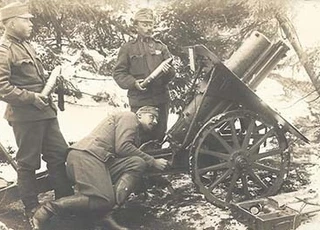
Related gallery
Back to the previous page!
